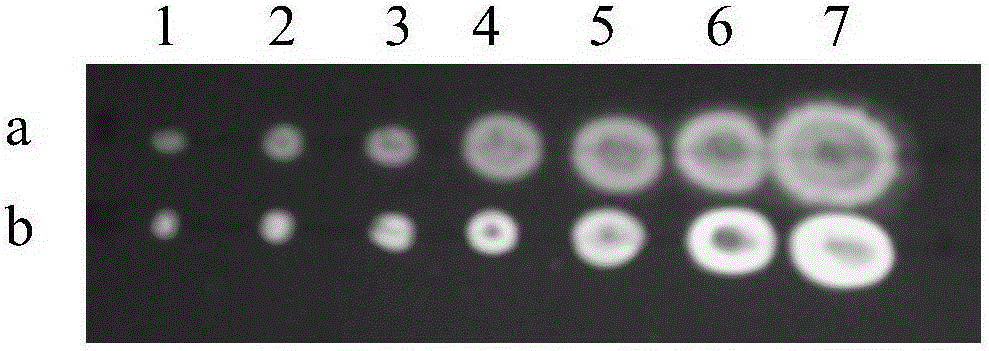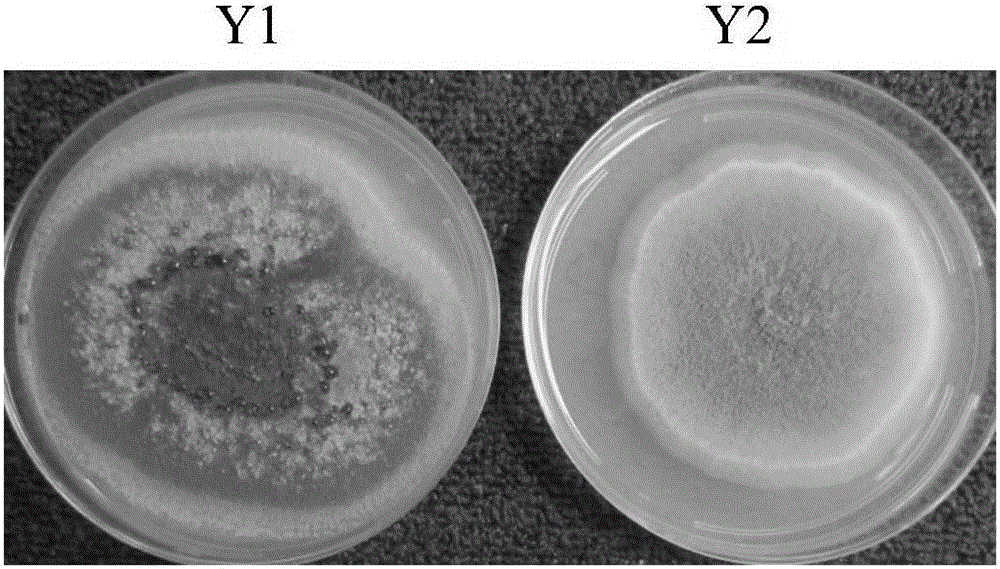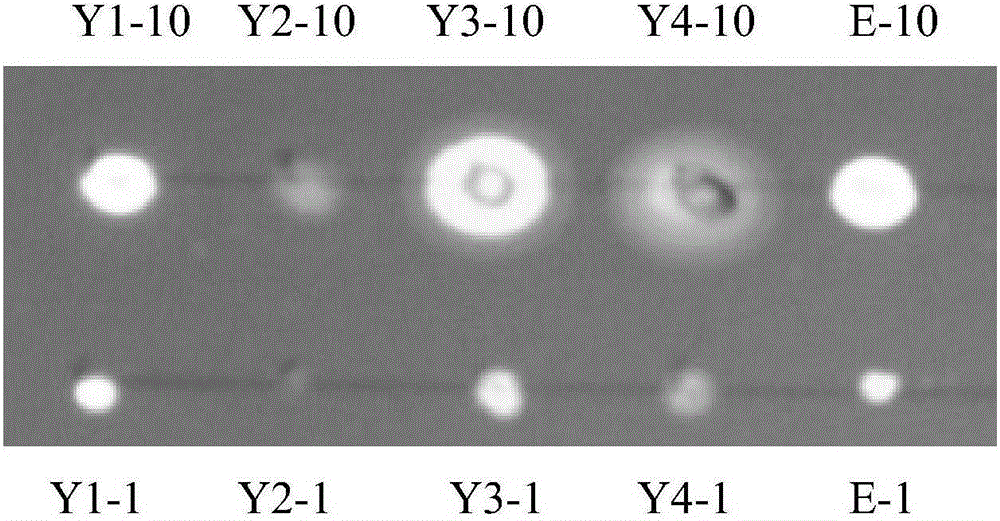Method for rapid detection of aflatoxin content in grain and food
A kind of aflatoxin, rapid technology, applied in the direction of measuring devices, instruments, scientific instruments, etc., can solve the problems of long detection time and high detection cost, and achieve the effect of short detection time, low detection cost and high industrial application value
- Summary
- Abstract
- Description
- Claims
- Application Information
AI Technical Summary
Problems solved by technology
Method used
Image
Examples
Embodiment 1
[0035] The mensuration of the aflatoxin content of growth in the embodiment 1 peanut
[0036] (1) Take 1 moldy peanut, weigh it, 0.45g, cut it into small pieces, place it in a test tube, add 800 μl of chloroform, stir and extract for 5 minutes, take the extract, and obtain the test product;
[0037] (2) The test sample and the aflatoxin standard sample of step (1) are added to the same thin-layer silica gel plate respectively, and when the test sample and the aflatoxin standard sample are added in the spot, the points are all increased by the point addition amount. The order is added sequentially, and the amount of the test sample and aflatoxin standard sample is shown in Table 1.
[0038] Table 1. The sample volume of the test product and aflatoxin standard sample on the thin-layer silica gel plate
[0039]
[0040]
[0041] The aflatoxin standard sample in Table 1 is a mixture of aflatoxin B1, aflatoxin B2, aflatoxin G1, and aflatoxin G2 in a mass ratio of 1:1:1:1. I...
Embodiment 2
[0053] Detect the types and contents of aflatoxins from Aspergillus parasitica and Aspergillus flavus growing on the culture medium and contaminated peanut samples.
[0054] Samples to be tested: Aspergillus parasitica (Y1) grown on the culture medium, Aspergillus flavus grown on the culture medium (Y2), peanut infected by Aspergillus parasitica (Y3), peanut infected by Aspergillus flavus (Y4).
[0055] Said Y1 and Y2 are the mycelia obtained after inoculating Aspergillus parasitica and Aspergillus flavus respectively on the PDA medium and culturing them at 30°C for 5 days, as shown in figure 2 , it can be seen that Aspergillus parasitica is covered with hyphae on the medium and produces spores (Y1).
[0056] (1) Use a knife to cut out 1cmx1cm agar with mold (0.5cmthick) from Y1 and Y2 respectively, the total amount is 0.5cm 3 . Cut into small pieces, place them in test tubes respectively, add 800μl chloroform, stir and extract for 5 minutes, take the extract, and obtain Y1...
PUM
| Property | Measurement | Unit |
|---|---|---|
| diameter | aaaaa | aaaaa |
Abstract
Description
Claims
Application Information
 Login to View More
Login to View More - R&D
- Intellectual Property
- Life Sciences
- Materials
- Tech Scout
- Unparalleled Data Quality
- Higher Quality Content
- 60% Fewer Hallucinations
Browse by: Latest US Patents, China's latest patents, Technical Efficacy Thesaurus, Application Domain, Technology Topic, Popular Technical Reports.
© 2025 PatSnap. All rights reserved.Legal|Privacy policy|Modern Slavery Act Transparency Statement|Sitemap|About US| Contact US: help@patsnap.com



